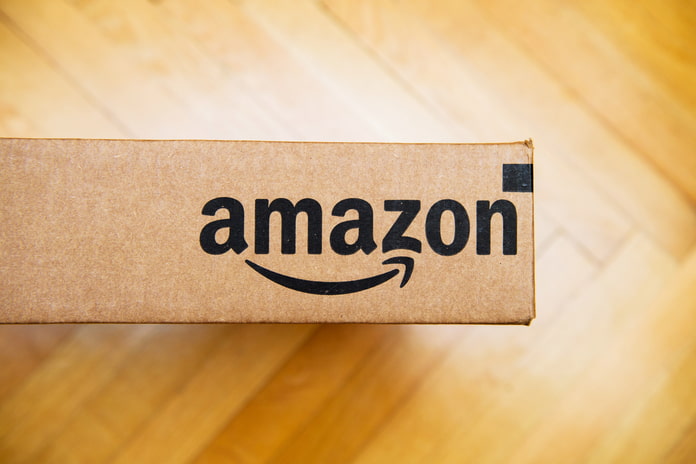Amazon Stock (NASDAQ:AMZN)
With Amazon.com, Inc.’s (NASDAQ:AMZN) Amazon Web Services (AWS) growing 16%, Google’s (NASDAQ:GOOGL) Cloud growing 28%, and Microsoft’s (NASDAQ:MSFT) Azure growing 27% during 1Q23, compared to Gartner’s prediction of 22% for 2023, it appears that AWS may be positioning for disappointing growth in the coming quarters. So, what? It’s not as if Amazon lacks growth drivers, that it can’t squeeze out more earnings by improving operations, or that it has run out of innovative business ideas. Amazon stock has gained nearly 45% year-to-date and is still a Buy.
Third-party merchants accounted for 59% of overall sales in the first quarter, up from 55% the previous year. Furthermore, sales connected with advertising, third-party seller services, and Amazon Prime increased by 21%, 18%, and 15%, respectively, year over year. Furthermore, as a percentage of revenues, the cost of sales and fulfillment expenses decreased by 3.7% and 1%, respectively. Furthermore, AMZN has a thriving pipeline of One Medical, Kuiper, and AI technologies. The company is not a one-trick pony that will perish due to a temporary growth shortage in a single segment. AMZN is a company that is outlasting most of its current investors, reflecting the ebb and flow of the global economy.
AWS is anticipated to suffer slightly weaker growth in the short term, consistent with management commentary estimating 11% growth in 2Q23, and we believe Azure will continue to dominate the cloud computing environment in the near term. However, the significant growth linked with the e-commerce industry may offset some of the AWS revenue difficulties. People purchase even during recessions, and AMZN, with the most diverse product offering on the earth, is likely to reflect the muted effects of an economic slump. Furthermore, retail growth is expected to be boosted by sustained improvement in European economies, as supply-chain bottlenecks related to the Ukraine/Russia conflict ease and inflation stabilize as a result of falling gas prices and energy costs. Furthermore, given that AMZN’s e-commerce business is the growth engine for its ancillary businesses, such as advertising, third-party seller services, and Amazon Prime, we anticipate robust growth in these categories despite macroeconomic concerns.
In terms of margins, we anticipate that the positive momentum seen in the first quarter, driven by commodity price tailwinds and lower fulfillment costs, will be sustained as key product prices continue to fall and delivery expenses fall as the fulfillment network transitions to a regional model from the prior national model, resulting in year-over-year growth in gross profits, operating profits, net income, and free cash flows.
Longer term, AMZN’s greatest days are ahead, not behind, based on future growth connected with the existing business, chances for margin increase, and the potential success of new endeavors. The variables listed below are likely to ensure that the company continues to thrive and provide good earnings for a lengthy period of time.
The AWS Growth Rate Is Set to Rebound
Without a doubt, the cloud computing Infrastructure as a Service (IAS) industry is well-positioned to benefit from the AI revolution. As the top IaS providers, AWS, Azure, and Google Cloud are projected to collect the majority of revenue connected with AI in the cloud. Overall, industry sales are expected to grow significantly.
AI services on AWS and Azure are substantially identical. Both platforms provide speech recognition, image recognition, natural language processing (including code generation), and tools for developing and deploying machine learning models. As a result, we are dubious if Azure’s 1% share gain over AWS during 1Q23 was due to substance or posture. Nonetheless, we believe that IaS is a substantially commoditized developed industry in which small transient market share fluctuations are likely to be the norm.
However, given economic realities, notably the likelihood that many large technology businesses will eventually provide similar AI services, we do not expect AWS to lose significant market share. Furthermore, AMZN will continue to use AI on the backend of its business to drive revenue growth in e-commerce, advertising, and Prime Video.
Amazon’s Core Business’s Fast Growth Will Continue
Despite tremendous growth, notably during the epidemic, AMZN’s e-commerce company offers potential for large revenue expansion. In this regard, it is important noting that AMZN accounts for only 1% of worldwide retail and that 80% of category sales are generated offline. As a result, we anticipate AMZN’s growth in the segment will be derived from greater penetration within its developing markets, specifically the ten new territories the company entered over the previous five years, which include large markets such as India, Africa, the Middle East, and Europe, as well as Australia and Brazil. Large-scale ventures into the physical and mortar-grocery channel are likely to produce additional growth, notably in the United States, where 70% of customers continue to shop for groceries offline.
AMZN is the third largest advertiser, trailing only Alphabet and Meta Platforms (NASDAQ:META). Based on many criteria, we believe the firm’s sales in the segment are well-positioned to maintain the growth seen in previous quarters. Advertisers are increasingly aware that 56% of Americans (AMZN’s largest market) begin their purchase journey by searching for products on Amazon, that as the world’s largest retailer, AMZN is relatively insulated from economic downturns, as people shop even during a recession, ensuring that products promoted on the brand’s website gain traction, and that AMZN provides advertisers with the ability to evaluate the effectiveness of their promotional campaigns. Furthermore, growing advertising activity in Prime Video content and the grocery channel, both of which are underutilized in terms of revenue potential, is another chance to grow sales in the category.
Third-party seller services revenues, which include commissions on product sales and fulfillment/storage charges, are also expected to rise as e-commerce operations expand in developing markets and expand into new geographies, including the four planned for this year.
Furthermore, Amazon Prime revenues are poised for significant growth, driven by penetration in emerging markets and further geographic expansion of the e-commerce business, aided by Prime Video, which appears to be gaining popularity over Netflix (NASDAQ:NFLX) in densely populated regions around the world. We believe AMZN is more focused on acquiring new content libraries to supplement the significant premium content it obtained from the acquisition of MGM Studios, as the company’s leadership sees the category as a long-term growth driver.
Conclusion on Margin Expansion
The weak margin structure associated with the bulk of AMZN’s sectors is its Achilles heel. That is where a significant opportunity arises. Margins are anticipated to improve dramatically as the e-commerce industry goes up and economies of scale related to digital, advertising, and overheads produce operating leverage. In this light, the North American business, whose operating margins have shrunk to 1.2% from 4% to 6% pre-pandemic, represents a substantial opportunity.
Furthermore, as the company moves closer to its goal of a razor-blade model, and high-margin categories such as advertising, third-party seller services, and Amazon Prime begin to account for a larger portion of total sales, margins will rise proportionally.
Sustained Secular Growth Is Represented by a Solid Pipeline
It is worth noting that AMZN was one of the first companies to launch an e-commerce retail operation. Furthermore, cloud computing as a commercial category did not exist until Jeff Bezos and Andy Jassy came up with it in 2003. Given the combination of nearly limitless resources and the desire to pioneer businesses and build them into reliable growth drivers, we see AMZN’s pipeline ventures as a genuine potential that might significantly increase the company’s value offering.
AMZN is focusing on One Medical, a primary care firm that solves an unmet medical need for same-day or next-day consultation with a medical practitioner via chat or video. Although independent primary care offices are catching up with technology, our view is that their focus is on giving patients scheduling tools rather than solutions for urgent situations requiring quick medical evaluation, which One Medical specializes in. The service appears to be in its infancy, giving AMZN the ability to strategically build the firm by deploying financial and intellectual resources.
Kuiper is an AMZN attempt to develop a low-earth orbit satellite system capable of providing great broadband internet connectivity to consumers worldwide. Given that the addressable market consists of hundreds of millions of entities, including households, businesses, and governments, and that the terminal for accessing the service is small and lightweight, with a production cost of less than $400, we believe the enterprise could represent AMZN’s next leg of growth.
Other than for its own ecommerce division, AMZN’s focus on AI technologies, such as machine learning chips, huge language models, and chatbots, is likely to be commoditized, as every large technology company is equally involved.
We are increasing the 10-year normalized growth rate included in our 10-year Discounted Cash Flow model from 18% to 20% in order to represent anticipated growth from pipeline ventures. Based on the adjustment, we arrive at a Price Target of $154/share, up from $140/share before. We reiterate a Buy recommendation.
Conclusion
Amazon is unique. It truly works to improve people’s lives, rather than simply serving as a placeholder for the mission statement. Anyone who has worked with the company can attest to this. They treat their consumers honestly, offer high-quality items at reasonable prices, compensate their staff appropriately, and do not nickel and dime their vendors and sellers. It’s no surprise that people are drawn to AMZN’s company, which has led to its development into 22 nations.
Because of its size and the fact that it is a consumer business, AMZN is destined to be affected by changes in macroeconomic and geopolitical events. Furthermore, the company is rapidly expanding, and significant expenditures are being made. When AMZN is outperforming, it can easily absorb further growth spending. When times are tight, however, the shortage is passed on to the bottom line.
Trying to examine AMZN on a quarterly basis is a bad idea. The organization will most likely be around long after the majority of us have passed away. If you evaluate Amazon stock on those parameters, you may have a multi-bagger on your hands.
Featured Image: Megapixl @ Ifeelstock















